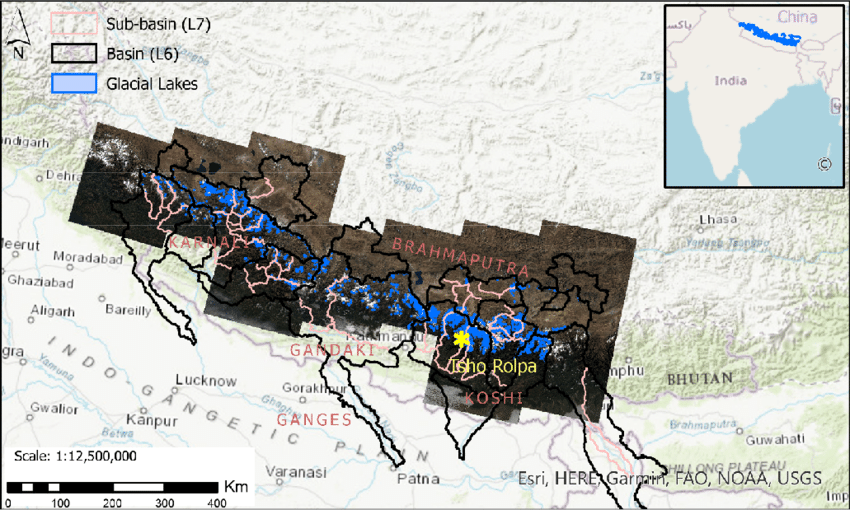Potential dangerous glacial lakes
Type of resources
Topics
Keywords
Contact for the resource
Provided by
Representation types
Update frequencies
status
-

The potentially dangerous glacial lakes were identified on the basis of the glacial lake inventory dataset using Landsat imagery from 2015. The following criteria were used for classifying the lakes: i) lake characteristics, ii) dam characteristics, iii) source/associate glacier characteristics, and iv) physical conditions of surroundings. Various parameters required for classifying such lakes were generated by using 5 m ALOS DEM for Nepal and 12.5 m ALOS DEM for China and India. Data include detailed analyses of land features and conditions using high-resolution images with 3D visualization on Google Earth. The dataset provides the size, type, and altitudinal distribution of such lakes, including the hazard rank of each lake. This dataset was prepared to support the Green Climate Fund project proposal formulated by UNDP Nepal.
-

The data on glacial lakes in 2015 were derived through a semi-automatic method using Landsat imagery from 2015 to 2016. The Normalized Difference Water Index threshold value was used for classification. Further, the lake boundary was revised or manually updated by incorporating those lakes that were missed because of atmospheric and physical processes such as being frozen, covered under snow, or obstructed by shadows and clouds. The mapped glacial lakes were validated and modified where necessary by overlaying the Landsat imagery over previous inventory datasets. They were also cross-checked with high-resolution Google Earth imagery. The attributes of glacial lakes were derived from SRTM DEM, and the data were projected in the WGS UTM projection system. This dataset was prepared to support the Green Climate Fund project proposal formulated by UNDP Nepal.
 Metadata Catalogue
Metadata Catalogue